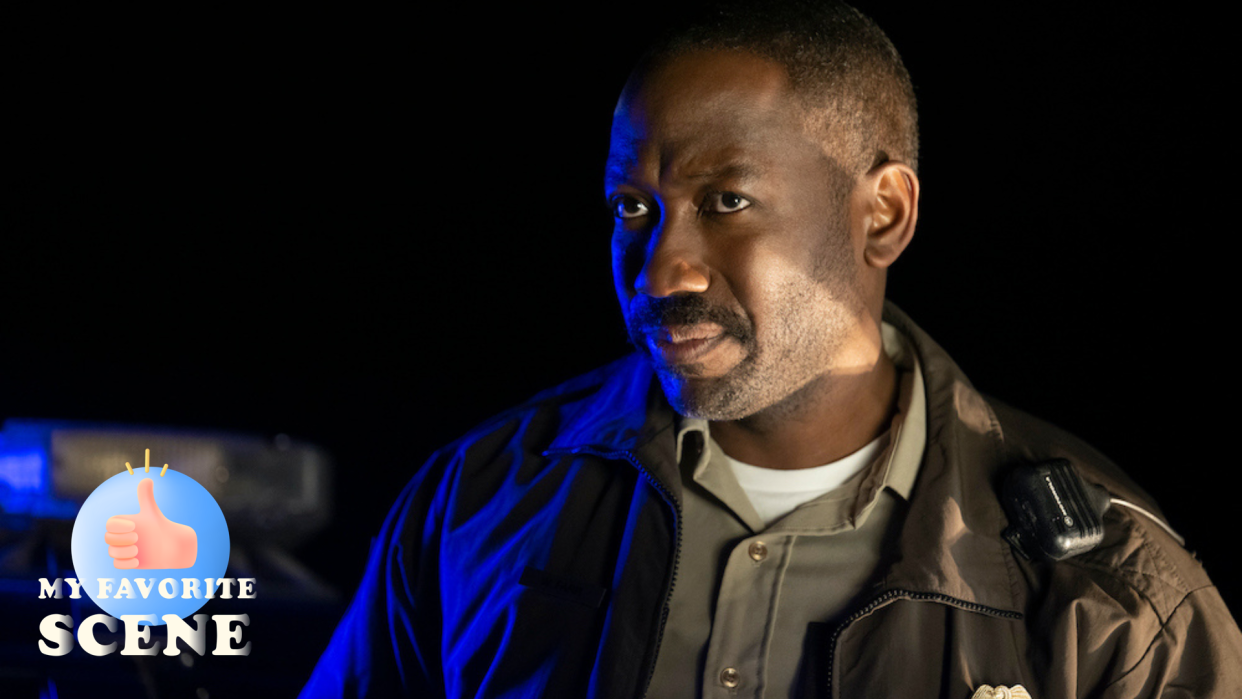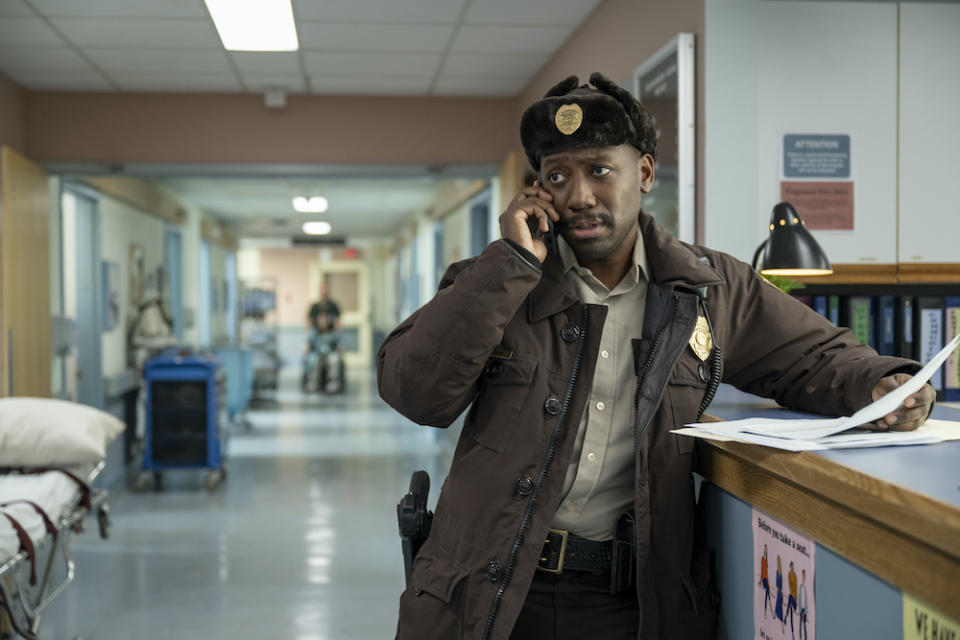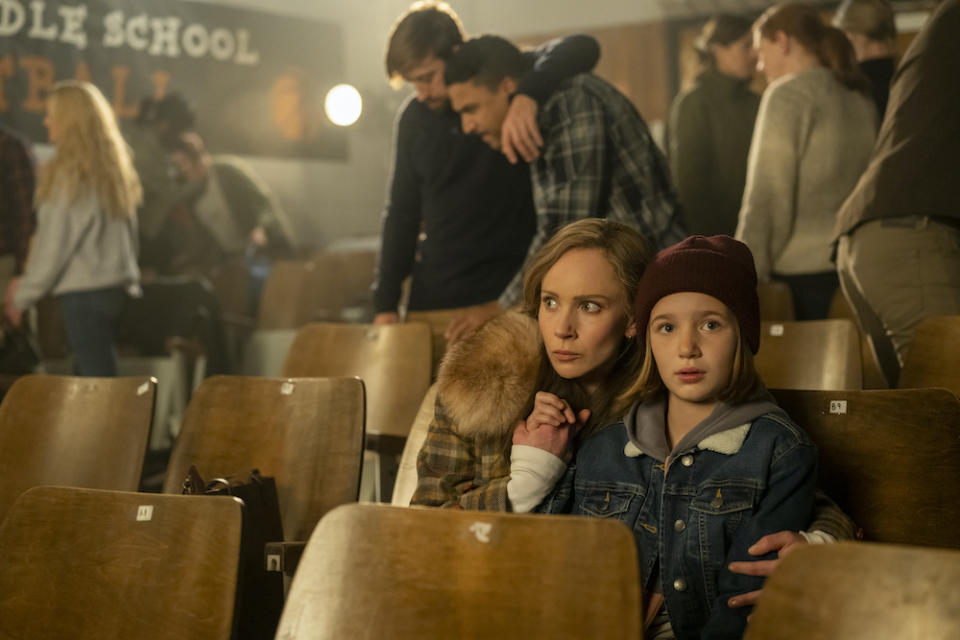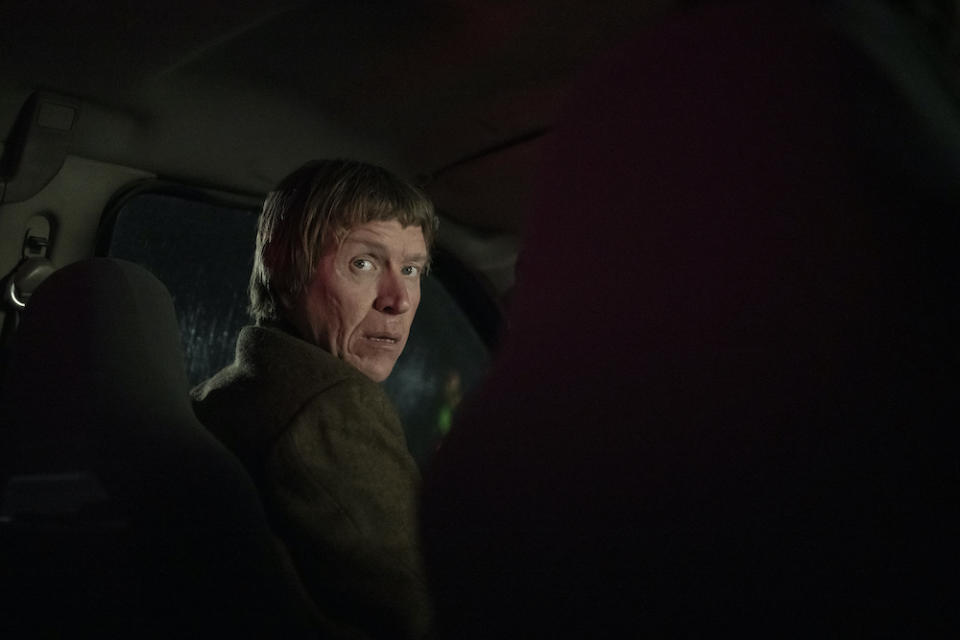How ‘Fargo’ Season 5 Turned ‘New Girl’ Nice Guy Lamorne Morris Into a Midwest Action Hero

- Oops!Something went wrong.Please try again later.
- Oops!Something went wrong.Please try again later.

Welcome to My Favorite Scene! In this series, IndieWire speaks to actors behind a few of our favorite television performances about their personal-best onscreen moment and how it came together.
IndieWire caught Lamorne Morris on the road. Headed to work on an unnamed set in Los Angeles, the “Fargo” Season 5 actor joked about an overcast day and rush-hour traffic. Asked how he was faring, he quipped on speakerphone, “Oh, I’m good! I’m in the car, just driving at high speeds recklessly. Very, veeery recklessly.”
More from IndieWire
The former “New Girl” actor may be many years entrenched in the Hollywood grind, but Morris is native to Chicago. A childhood spent in the American midwest helped him with the accent and demeanor needed for Deputy Witt Farr. The North Dakota highway patrolman has a surprise encounter in Episode 1 “The Tragedy of the Commons” with the scrappy Dot Lyon (Juno Temple) and menacing Ole Munch (Sam Spruell), kicking off the latest story arc in FX’s winding backroad of a black comic crime anthology.
Birthplace aside, Morris is a consummate showbiz professional and earnest filmmaking enthusiast who can’t help but put a little SoCal spin on his version of “Minnesota Nice.” Describing a grueling and technically challenging shoot for his favorite “Fargo” scene, he’s got enough energy to power Milwaukee — or Saint Paul, at least.
“Another interesting part about that was something that I’d never done before were the squibs and the effects of me being shot at with the VFX team,” Morris said, tacking on yet another cherished memory he has from making the roadside stop/gas station shootout sequence he crafted with his fellow actors and showrunner Noah Hawley.
“When I was sitting in front of the chips aisle and they’re shooting at me and I’m getting out of the way, that part was interesting as well because they make it so real for you what’s about to happen,” Morris continued. “The squibs are so loud and they’re going off right there, so you have to actually move because you can get hurt if you don’t get your ass out of the way.”
Filmed over six days on a custom-made set, the explosive finale to the Season 5 opener saw the “Fargo” cast and crew battling freezing temperatures, finicky stunts, bloody continuity errors, and more. The triumphant tale of a mysterious Anton Chigur-type (Spruell) colliding with the daughter of Rambo and Pippy Longstocking (Temple) begins in earnest just as Morris’ heart-of-gold police officer is introduced.
Witt is just one of many cop in this crime epic, which hinges in large part on the whims of the evil Sheriff Roy Tillman (Jon Hamm) — a kind of antagonistic antithesis to Morris’ reliable deputy. Thanks to “New Girl” and a few other projects, the character isn’t even the first cop Morris has played. Still, Witt stands out as an enduring portrait from the Midwestern nice guy.
Here’s how “Fargo” trained the man formerly known as Winston Bishop to be a bonafide action hero.
The following interview has been condensed for length and clarity.
IndieWire: What was your reaction to the Episode 1 script? And was that the first scene that you shot?
Lamorne Morris: I actually shot it out of order. The first scene that I shot was me in the hospital, which was Episode 2. It was really strange. I didn’t really know exactly how the Gas-n-Go scene would go or how it would play out — because even though the script says one thing, things can change on the day depending on location and access to whatever [the director and crew] might need. So I didn’t really know. But when I read the script, I just thought to myself, “Oh, shit, I’m Bruce Willis. Oh, my GOD, I’m an action star.” It was a pretty cool thing to read.
When I got there, it took six days I want to say to shoot the scene. I could be exaggerating by one day, but I think overall it took about six days to shoot this entire scene from the drive up when she escapes from the car all the way to the end when the police come to rescue her. But I don’t know, man, it was one of the wildest things that I’ve ever shot in my entire life. I mean, you’ve seen it, it’s shot beautifully, and Juno Temple does such a great job and Sam Spruell as well. It was my favorite scene by a mile.

You weren’t filming on a soundstage, so walk me through those two locations: the spot of the roadside stop and the Gas-n-Go face-off. Where were you shooting?
We were shooting in Calgary and Calgary is a beautiful city. It’s very much so a city, but right outside the city limits it looks like Fargo; it’s desolate, a lot of farmland and a lot of dirt roads to shoot on. So we shot the road bit I think about two hours outside of the Montana border; if that, maybe an hour and a half I want to say. But we started there. We started with just the cars pulling out of the gas station, keeping behind each other. We did maybe two days of car stuff. Noah Hawley is very particular about the way shots look and the mood and the tone of the scene, so we were shooting it until we got it right.
Also, keep in mind that it’s freezing cold outside. There were moments where the actors were kind of bundled up and huddled up, but Juno Temple was literally running around barefoot wearing a cardigan and it seemed like the cold didn’t phase her at all, which I was very impressed with because if you know me, I need heaters, blankets, warmers, et cetera. We actually had these little tents outside we were shooting in and they’d say, “Oh, we’re ready to shoot!” so we’d have to come out of our tents. And I’d go out and Juno would already be here barefoot, waiting.
Tell me about the gas station.
So, yeah, we started with the car scenes and after that we started working on the gas station scene. Now, that gas station was built. It’s not a real gas station, but, if you were to go inside, everything looks exactly like a gas station — down to the candy bars and the accessories and the things that are in there, including the bathrooms. Someone built that completely, and I think they’re leaving it there, which is cool I guess for anybody else who wants to shoot out there.
Once we got inside, then we got down to business. There is a moment where my character gets shot in the leg. That part was a little difficult to shoot because remember it’s freezing outside, but there were a lot of changes. Changing your pants here. Putting the bullet holes in there. Which side does the bullet come out? Where’s the exit wound? A lot of trial and error on that and doing my own stunts on that. We did have a stunt guy for one part of it, but for the most part it was all me doing it.
Tell me about preparing for the possibility of doing stunts. You’ve done comedic work that’s fairly physical, but this is a much bigger technical challenge.
Well, when you read the script you can kind of get a good sense of what stunts you’re going to be doing and what is needed from you. For me, a lot of it was [practice] and I wouldn’t call it all stunts. Some of it was just weapon work, using a gun for about two or three months leading up to it. I did weapons training with a guy named Phil. He’s awesome — former SEAL Team 6. We would go out to the range and he would just teach me the proper ways to use guns and use weapons. And we went through every scenario [in the script.] If you remember in the show, I get shot and I hit the ground and I raise the gun up and I’m shooting. Or like, in the first scene when they’re shooting at me through the car and I’m ducking behind the door.
We ran through all those scenarios so it doesn’t feel like foreign movement to me. Everything from getting down on one knee, shooting over a window, shooting through a window, shooting from the ground, that type of stuff you really want to prepare for because you don’t want to just think you’re Jean-Claude Van Damme and you’re going to just do it and it’s going to look cool and sexy and you’re going to have a cool accent. No, you got to really work on that. So working with Phil definitely helped me out.
Oh, and you probably want to stretch a lot too, depending on how used to movement you are, because I would say stretching definitely helped. Especially your knees because it’s a lot of falling on the ground, jumping back up, falling on the ground, jumping back up. The rest was fairly simple.
So much of that scene happens in the dark or an almost complete blackout. What obstacles do you face as a performer emoting in a low-light environment?
I mean, it is a dark space, it is a dark setting, but all it does is help you with the character. Obviously, you’ve got to do your technical stuff — your loud whispers, you know what I mean? You kind of have to fool the audience a little bit with speaking in normal tones because you do have to hear us. But [the dark] helps you performance wise because like I said, Noah and the creative team on set dec, they set the tone really well.
In fact, even the cameras are kind of in creep mode. The cameras are dark too, so you barely see them. Our A camera operator would whisper little things in my ear, like, “Hey, in this moment you come up, I’m going to be right behind you, so if you want to kind of tilt your head to this side, I’m going to be super close to your face.” He would just say things like that to you so you don’t even pay attention to the camera. You just remember what he said and it’s there. So the darkness just helps you if anything.

You said you were able to shoot the hospital scene in Episode 2 before the shootout for Episode 1, but can you tell me a little bit about speaking in that kind of regional dialect under duress? That seems like a difficult way to establish a character’s voice.
Yeah, it is, but a lot of that stuff is handled in the preparation leading up to it and the vocal coaching on set definitely helped me out big time. I’m also from the Midwest, so there’s a little bit of that in there already — a tiny bit of it and that definitely helped.
But Juno for example, and I did this at times, but Juno would speak in that accent all day, even off camera because again, there’s a level of comfortability that you want to have when doing it, and it needs to be second nature speaking that way. So even on your downtime, you want to improvise in that accent. You need to be from this location, even in a shootout scene. Noah Hawley said to me once that he does a great job of casting and it gives you the ability to trust your instincts. And if you’re slightly off on the accent, you’re all just workshopping; the dialect coach is there and Noah is there and they’ll let you know.
Another cool thing about Noah is that he writes in that accent, which is awesome. He’ll sound words out for you. He’ll write ’em out the way it needs to be phonetically. He’s great like that, so it definitely helps.
Did you ever have to ask him what a word meant?
No, luckily I didn’t. There are certain terms that I know I’ve never used before though. It’s cool because it puts you directly into the scene and it puts you into the character’s skin, but you’re going, “Wow, all of my years on planet Earth, I have never said these words in this order.” There’s a scene with Richa Moorjani’s character and I — she’s talking about what happened to some guy, I want to say we’re discussing security cam footage — and I say, “Well, that’s the shame you see.” I read that script and I went, “What?! I’ve never said ‘That’s the shame!’ ever in my life. I’ve said ‘that’s.’ I’ve said ‘the.’ And I’ve also said ‘shame.’ But I’ve never said them in that order.”
That’s the shame.
That’s the shame!
You’re simultaneously dealing with a complex character relationship — with a reversal that sees this abducted woman (Temple) ultimately partnering with and saving the cop who saw her get free. What if anything did you and Juno discuss when establishing the dynamic between Witt and Dot?
Honestly, that’s just a lot of improvised moments. You can rehearse all you want, but you don’t really know how you’re going to do it until you’re working across from your scene partner. And it’s a lot of give and take. You can rehearse one reaction, but if Juno plays it [differently], forces you to react in a completely different way. We didn’t really discuss our dynamic necessarily in those moments. We did discuss the overall arc dynamic between our characters.
We talked a lot about the similarities between our characters and the people we know and ourselves. I was sharing personal stories with Juno about how I grew up and about my mom and her survival instincts. We talked a lot about that, which definitely helps set the table for you. It gives you a different perspective on how certain people go about survival. Whether she used that or not, I don’t know, but I can tell you she was fantastic and whatever she did worked.
For me, like I said before, it was just a lot of just chitchat [and getting comfortable.] What happens with performance is that you want to take big swings. Sometimes you want to aim for a take on the character that might not be so obvious and you do want to feel comfortable doing it. Because we as actors sometimes get a bit insecure in certain things, thinking, “Can I play it this way? How are they going to react? Is this going to fuck up their vibe?” Once you get to know somebody and you have those personal conversations, you get so much more comfortable taking big swings and that definitely helped me with her and let me not feel self-conscious about how I wanted to play the character.

You’re not all that directly related to this moment, but it’s one of my favorite jokes in “Fargo” ever. What was your reaction to the air horn beat when you first read it — with the clerk using an air horn as a defense mechanism and then immediately getting shot?
It’s such a tense scene and this character, Ole Munch played by Sam Spruell, is so menacing that I definitely thought it helped take some of the tension away. Because with intense scenes, in order to really fully feel the intensity, you do need a little levity here and there to cut through and actually amplify some of the tension and allow the audience to breathe a little bit. So I thought it was really funny!
“Fargo” is a comedy, and even in intense moments, you have odd characters who do weird things. I mean, here’s this dumbass who jumps up with an air horn, when he hears the gunshots and he knows people are working with real bullets. I walk in bleeding and this dumb motherfucker has an air horn! So when he got shot, I was like, “Yep, that sounds right. That makes a lot of sense.”
And I love how Sam played that scene, where he shot him without looking. He just kind of put the gun over almost as if he knew he was there, which was a pretty cool choice on his part.
What if anything do you remember of the actor who played the cashier (Tre Davies)?
I remember he was funny. He was funny. I think that was one of his first jobs, if not his first or second job — I can’t remember. But he was really funny and really inquisitive, which is cool because working on a big show like this and having such a cool role, he was definitely asking a lot of questions, which is what you’re supposed to do. He crushed it. I’m excited to see what else he’s got cooking up, but I just remember him being a really funny, cool young kid.
Knowing where Witt ends up with the rest of the season, why is the gas station a good introduction to his character? Why meet him in the middle of the action?
Well, it kind of sets the table of how relentless he is and how he won’t give up on something. We talk a lot about on this show about debt, and a lot of folks on this show owe a debt. People are in debt to Witt, but he is the only one who has no debt. So when you see this first scene, it kind of sets the table because now he’s indebted to someone. This woman saved his life, and so for the first time in a long time, maybe for the first time in Witt’s life, he owes someone.
Again, he’s the type of person that will split a meal right down to the penny. Throughout the rest of the season we see him nonstop trying to figure this out. He won’t give it up. He can’t sleep at night. This is something that has kept him awake for a long time. And I feel like when we watch that first scene, it sets the audience up to let them know, “Hey, this is who this guy is. This is what you can expect.” There’s a couple episodes where you don’t see him and, hopefully when you see him again, you kind have a reassurance. It sets the tone for the rest of the season for the audience, I would say. Because what you see in that first episode is what you see throughout. He’s like, “No matter what, I’m busting my butt to get this done even if it costs me my life.” The first time, it cost him a hole in his leg. In the end, there’s a hole in his heart.
Costumes can put actors in certain headspaces, and seeing you put on another police officer’s uniform I couldn’t help thinking about our good pal, Winston Bishop. Tracking from “New Girl” to “Fargo,” is there anything that strikes you about playing that offkilter cop archetype from such different perspectives?
Yeah, 100 percent. Winston is very stupid. Well, I shouldn’t say stupid. “New Girl” is so whimsical and silly; it’s kind of slap-sticky in moments. Winston, I like to say, is the type of cop who shouldn’t own a gun and Witt Farr is a real cop. Witt Farr is someone who is actually protecting folks and putting his life on the line whereas Winston, let’s be honest, you wouldn’t trust this man with your life. I would trust Winston to call the police, but I wouldn’t trust him to be the police showing up. So it was really fun to do that.
I have this kind of running joke. I think I have played a cop in maybe four things or five things now. I forget. In Netflix’s “Christmas Chronicles,” I was a Chicago police officer. In something else too, but I can’t remember. But yeah, it’s fun to put a uniform on and play it real with high stakes involved. To actually have to see what it’s like to use your weapon in a scene — as opposed to maybe fumbling your weapon and dropping it on the ground in a scene like Winston would — felt good.
Bruce Willis would never.
No, he would not!
“Fargo” Season 5 is now streaming on Hulu.
Best of IndieWire
2023 Emmy Predictions: Who Will Win at the Primetime Emmy Awards?
2023 Emmy Predictions: Outstanding Documentary or Nonfiction Special
2023 Emmy Predictions: Outstanding Documentary or Nonfiction Series
Sign up for Indiewire's Newsletter. For the latest news, follow us on Facebook, Twitter, and Instagram.

